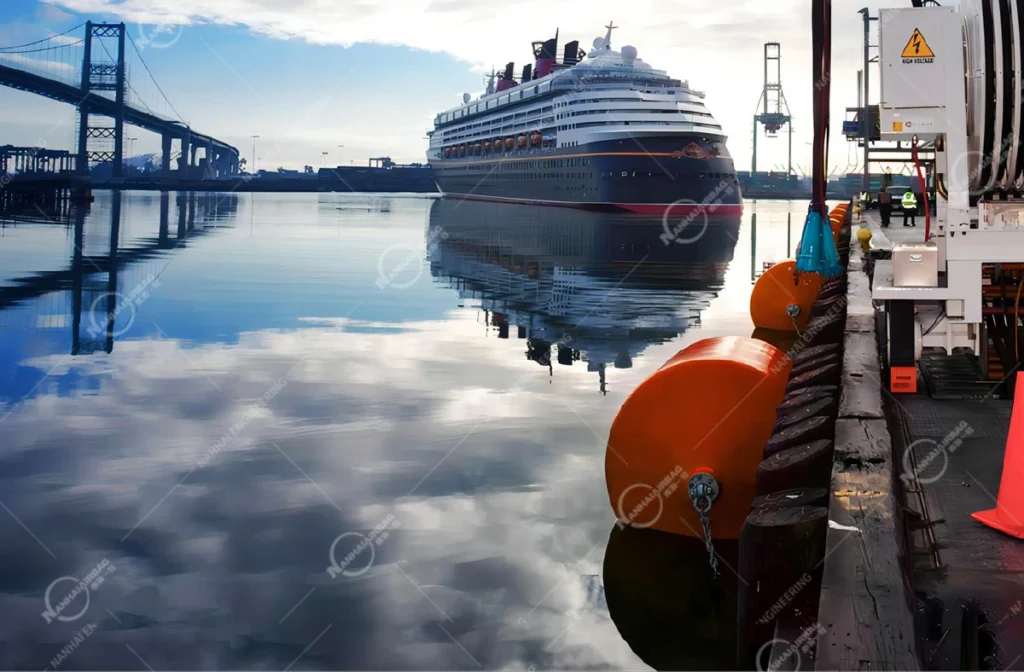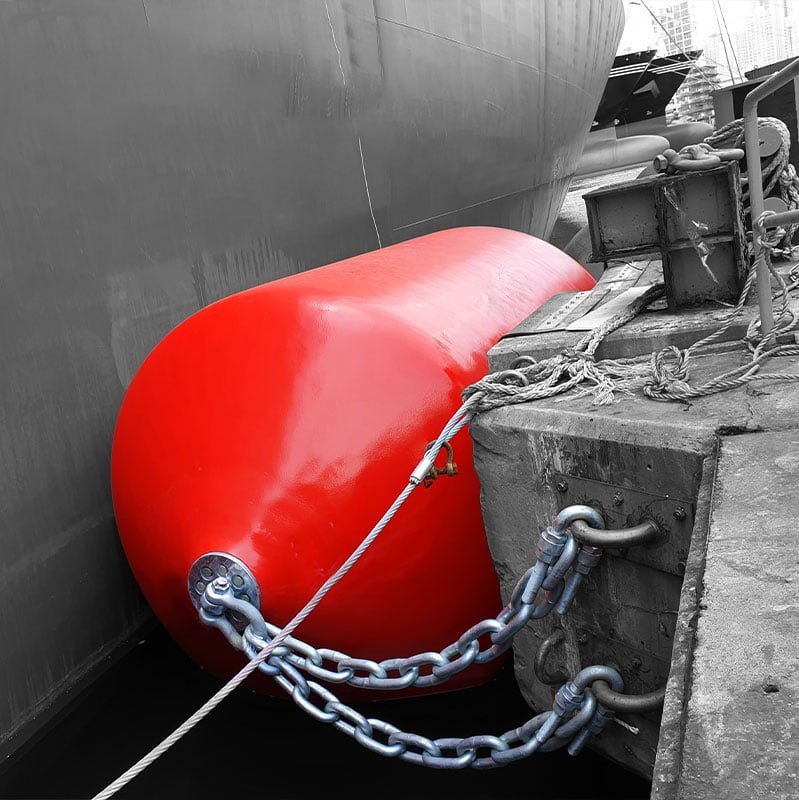STS Fenders: The Quiet Guardians of Safe Ship-to-Shore Operations
14/08/2025Cone Rubber Fenders: The Marine World’s Secret to Stress-Free Docking (No More Scratched Hulls!)
21/08/2025

You’re backing your 25-foot fishing boat into the dock on a windy afternoon. The current shifts, and—thud—you hear that dreaded scrape. The hull’s scuffed, paint is peeling, and now you’re facing a $500 repair bill. Sound familiar? For boat owners, marinas, and small vessel operators, docking mishaps are more than just annoying—they’re expensive. That’s where EVA foam fenders step in: lightweight, flexible, and designed to turn those “thud” moments into “ahh” moments of relief.
What Are EVA Foam Fenders? (The Quick Answer)
EVA foam fenders (Ethylene-Vinyl Acetate foam fenders) are soft, buoyant marine fenders made from expanded EVA foam—a durable, elastic material known for its shock-absorbing properties. Unlike rigid rubber or metal fenders, EVA foam fenders conform gently to a vessel’s hull, distributing impact force across their surface to protect both boats and docks. They’re lightweight, easy to install, and built to withstand saltwater, UV rays, and repeated use—making them a go-to for small boats, fishing charters, and marinas worldwide.
Why EVA Foam Fenders Are a Game-Changer for Small Vessels (And Why You Need Them Now)
Let’s cut to the chase: If you own a small boat, run a marina, or manage a dock, skipping on quality fenders is like driving a car without brakes—eventually, you’ll pay the price. Take Maria, who runs a busy marina in Florida. Last year, her dock used thick rubber fenders. Within 6 months, 70% of her clients complained of hull scratches, and two boats needed costly repairs after minor collisions. Maria switched to EVA foam fenders, and within a season, those complaints dropped by 90%. “It’s like night and day,” she says. “Boaters love that their boats stay scratch-free, and I’m saving thousands on repair subsidies.”
This isn’t just Maria’s story. Here’s why EVA foam fenders are urgent for youroperation:
- •Small Boats, Big Risks: Kayaks, fishing skiffs, and sailboats have thin, delicate hulls. Traditional rubber fenders can dent or scrape them—even with careful docking. EVA foam’s softness acts like a “cushion,” preventing damage.
- •Marina Reputation = Revenue: Happy boaters return. Scratched hulls lead to angry reviews, lost customers, and wasted time fixing avoidable damage.
- •Durability in Harsh Conditions: Saltwater, sun, and wave action break down cheap fenders fast. EVA foam resists UV degradation and won’t rot or corrode—lasting 5–7 years (or longer!) with minimal upkeep.
How Do EVA Foam Fenders Work? The Science of “Gentle Strength”
EVA foam fenders might look simple, but their design is anything but. Here’s why they outperform older fender types:
1. Soft, But Not Flimsy
EVA foam is dense yet flexible. When a boat bumps into a dock, the foam compresses slowly, spreading the impact force across the entire surface of the hull. This “shock absorption” reduces peak force by up to 60% compared to rigid rubber fenders.
2. Buoyancy = No Heavy Hardware
Unlike metal or concrete fenders, EVA foam floats. That means no need for bulky brackets or anchors—they stay in place thanks to their natural buoyancy. Perfect for small docks, kayaks, or temporary setups (like fishing tournaments).
3. Built to Last
EVA foam is resistant to saltwater, mold, and UV rays. Even after years of sun and waves, it won’t crack or crumble. Most brands offer a 5-year warranty, but with proper care, they often last twice that.
EVA Foam Fenders vs. Other Marine Fenders: What’s the Difference?
Not all fenders are created equal. Here’s how EVA foam stacks up against common alternatives:
1. EVA Foam Fenders vs. Rubber Fenders
Rubber fenders are durable but toorigid. They concentrate impact on small areas, leading to dents or scratches—especially on thin-hulled boats. EVA foam, by contrast, “gives way” gently, protecting both the boat and the dock.
2. EVA Foam Fenders vs. Marine Airbags
Marine airbags (inflatable rubber tubes) are great for liftingboats during launches or repairs. EVA foam fenders, however, are for protectingduring docking. They don’t require inflation or deflation—just position them, and they’re ready to work.
3. EVA Foam Fenders vs. Plastic Fenders
Plastic fenders are cheap but brittle. They crack in cold weather or under heavy impact. EVA foam is flexible even in freezing temperatures, making it ideal for year-round use in colder climates.
People Also Ask: Your Top Questions About EVA Foam Fenders
Q: Are EVA foam fenders only for small boats?
A: Not at all—they come in sizes ranging from 12-inch “mini fenders” for kayaks to 4-foot “heavy-duty” versions for small barges or fishing boats. Some manufacturers even offer custom sizes for unique docking needs.
Q: Do they need special maintenance?
A: Nope. Just rinse them with fresh water monthly to remove salt or algae, and store them out of direct sunlight when not in use. Avoid sharp objects (like boat hooks) that could puncture the foam.
Q: Can they be used in both freshwater and saltwater?
A: Absolutely. EVA foam is non-toxic and resistant to corrosion, making it safe for lakes, rivers, and oceans.
Q: How do I choose the right size?
A: Measure your boat’s hull width and docking speed. For small boats (under 30 feet), 12–18 inch fenders work well. For larger vessels (30–50 feet), opt for 24–36 inch fenders.
Q: Are they worth the cost compared to cheaper fenders?
A: 100%. A 30EVAfoamfendermightcost2xmorethanabasicrubberone,butitlasts3–4xlongerandslashesrepairbills.OnemarinainCaliforniasaved8,000/year after switching—enough to buy 20+ fenders outright.
Final Thoughts: Protect Your Investment (And Your Peace of Mind)
Docking shouldn’t feel like a high-stakes game. With EVA foam fenders, you’re not just buying a fender—you’re buying confidence. Confidence that your boat stays scratch-free, your marina keeps happy customers, and your wallet avoids unnecessary expenses.
Ready to upgrade? Start by measuring your docking area and boat size, then check out trusted marine suppliers (look for those specializing in marine fenders). Your hull, your dock, and your sanity will thank you—no more “thud” moments, just smooth, worry-free docking.
